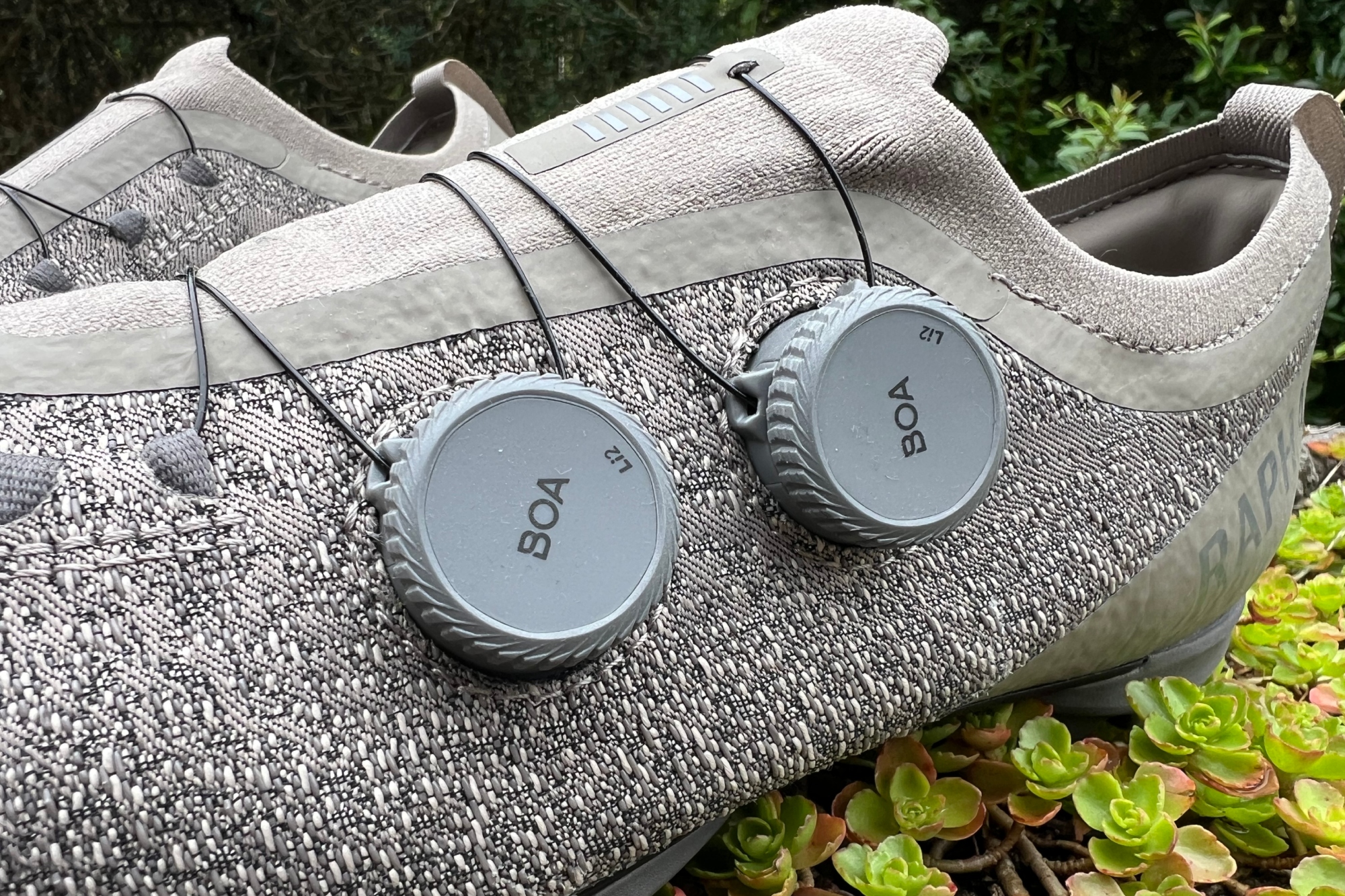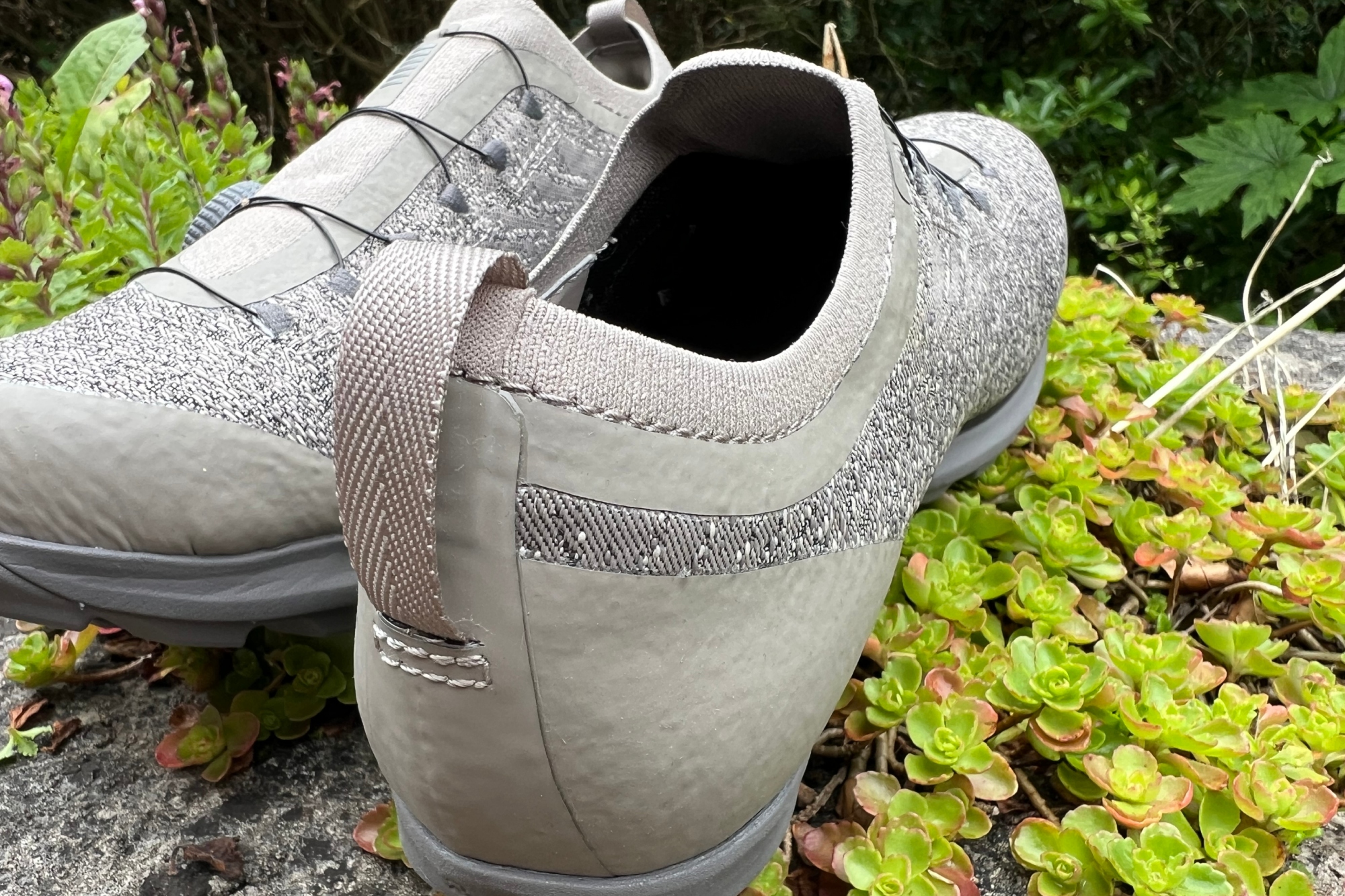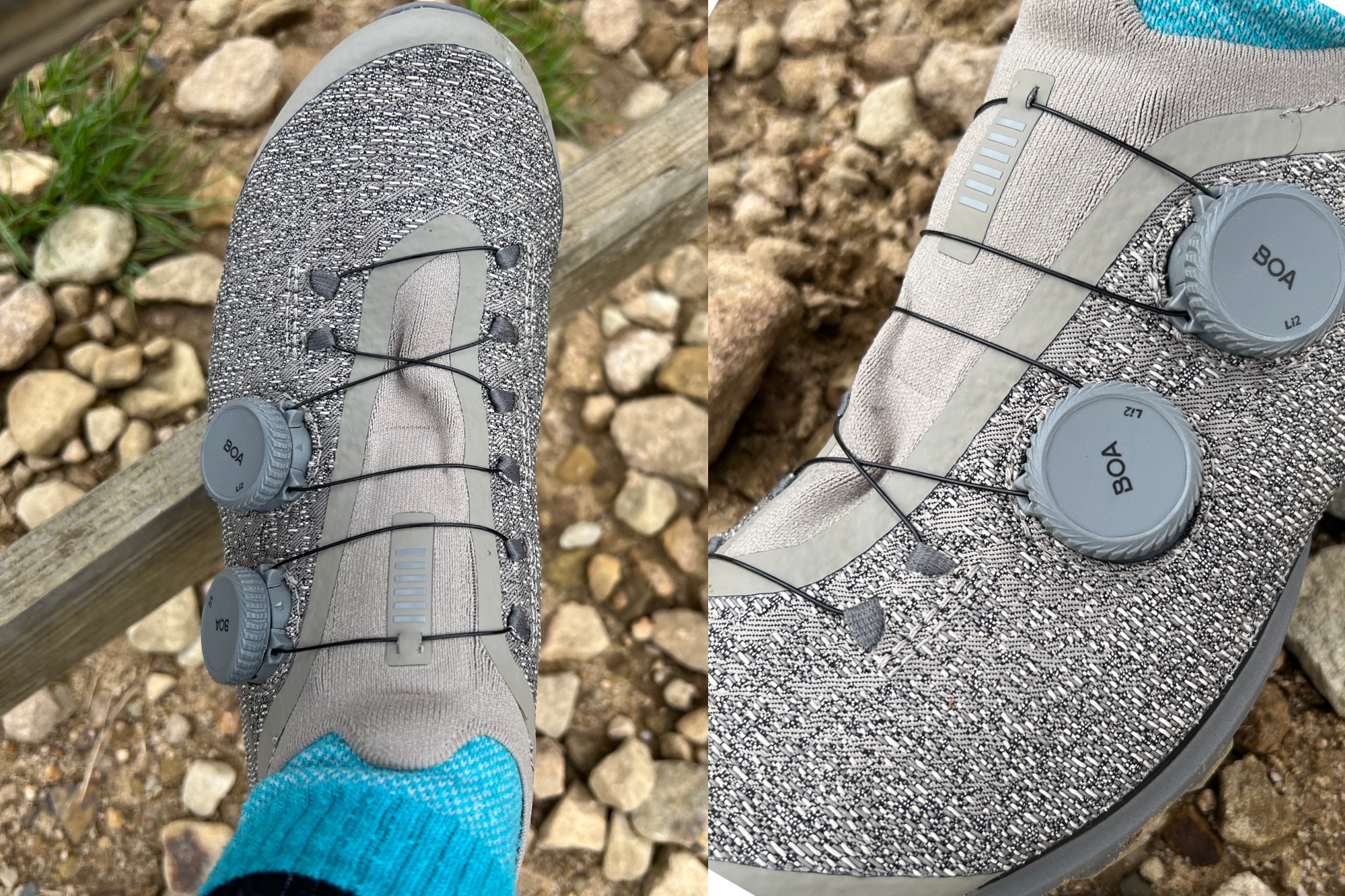When it comes to off-road performance footwear, there is a delicate balance to strike. Comfortable and rugged, yet lightweight and sufficiently stiff to press on.
The best gravel shoes for you will enable you to do just that, so the Rapha Pro Team Powerweave gravel shoes could be your perfect pair.
(Image credit: Hannah Bussey)
Construction
As with all gravel shoes, the Rapha Pro Team Powerweave can be divided into three key elements: the shoe upper, the sole, and the footplate. The footplate is similar to a car’s chassis; it is the load-bearing framework of the shoe, serving as a platform to which the rest of the material is mounted.
According to Rapha, the Pro Team Powerweave’s footplate is made of one hundred percent carbon fiber with a reinforced toe support area. The brand states that this allows for efficient power transfer and durability.
On top of the footplate is the woven upper. Rapha says that this 60% recycled polyester, high-strength 3D ‘Powerweave’ design enables the shoe to be comfortable and breathable, containing 40% TPU yarn (a type of thermoplastic elastomer), which should provide a decent level of abrasion resistance.
Sewn into this upper is a one-hundred percent recycled collar and ‘sock,’ which effectively replaces a traditional shoe tongue. Rapha believes that sock construction will ensure a stable and locked-in fit, eliminating possible tongue movement and hotspots. It’s worth noting that Rapha is doing well in reporting its impact and has published its Synthetics Sourcing Policy, meaning that we should be assured that the percentage of recycled polyester stated (as well as manufacturing methods) is traceable and transparent.

(Image credit: Hannah Bussey)
We’ve seen the dual Boa closure option fitted to several gravel shoes, such as the Giro Sector and Lake MX 238, both offering similar setups. However, the details matter: only Lake’s now feature the same Li2 Boa closures as the Rapha Pro Team Powerweave, which enable a multidirectional fit, whereas the Giro’s only have the L6 for tightening.
At the bottom of the footplate, an EVA (Ethylene Vinyl Acetate) lightweight and flexible foam midplate is positioned, complemented by a Vibram Megagrip outsole for off-bike agility and grip, with a twin bolt cleat system.
This all adds up to a rather lightweight package for gravel shoes, with my test size 40.5 EU (6.75 UK/7.75 US) weighing 266g each, and 523g for the pair. Using a more common size of 42 EU, Rapha claims they weigh just 16g more—282g per shoe, 564g per pair—making these, in my reckoning, the lightest gravel shoes on the market.

(Image credit: Hannah Bussey)
The ride
Having recently ridden a pair of old Northwave off-road shoes on a family cycling holiday to watch some of the Tour de France, which involved a lot of walking and standing around, putting on the Rapha Pro Team Powerweave shoes again was a shock for my feet and legs.
I’d already worn the shoes for local rides in the Peak District. However because I was using lightweight shoes on the road at the time meant I hadn’t appreciated just how light the Pro Team Powerweaves were.
However after my trip to France I’m now acutely aware of just how heavy many off-road bike shoes are. My hip flexors had been working overtime in the Northwave shoes, which at 484g each were nearly double the weight of the Powerweaves. Putting on the Rapha shoes meant my legs were very thankful for the significant reduction in mass each pedal revolution.
The stiffness of these shoes compared to regular off-road platforms was also noticeable. I don’t have power pedals to measure this more precisely, but the feeling is that there is limited flex in the sole, especially on climbs.
The downside to this stiffness is felt significantly when off the bike. While the Northwaves had been bulky, they were bearable for a full day of wear; the Rapha shoes, however, were not. A challenging four-hour ride, which involved multiple dismounts where the trail was not rideable, left me wishing I could take them off. The Vibram Megagrip feels soft and rubbery, but due to the inflexibility of the footplate, there was little feedback from the ground, leading to a peculiar gait when walking over uneven ground.
The multidirectional Boa Li2 dials are easy to adjust on the move, although they can be a bit noisy when loosening and clicking back through the ratchets. Having two dials is very beneficial, as they can both tighten and loosen independently, providing a significant difference in fit around your foot.

(Image credit: Hannah Bussey)
The sock plays a significant role in the specific fit feature, although I found that because I needed to tighten the lower dial more than the upper, the fabric ruched. This then pressed uncomfortably on my metatarsals.
The sock could also do with being a couple of centimeters taller. While it was tight enough around my ankle to prevent small stones from entering my shoes, it was an awkward height for a heel cup and foot collar, and rubbed my ankle, especially when off the bike. This made it almost unbearable to walk any reasonable distance.
Value and conclusion
The Rapha Pro Team Powerweave gravel shoes feel like the closest crossover shoe between road and off-road riding. They deliver great power transfer, a high level of adjustability thanks to the Boa dials and foot arch options, and are probably the lightest off-road shoes on the market.
However, with this level of performance comes a lot of compromise in comfort and compliance. These are not the shoes for you if your riding typically requires even a small level of hike-a-bike or the off-bike requirements of a bikepacking trip.
The performance also comes at a price. At £350/$480, they are among the more expensive gravel options. This may not seem wild when you stack them against road shoes; notably, they are exactly the same price as the Rapha Pro Team Powerweave road shoes. However, it’s a hefty price tag considering there is way more to off-road riding than purely power-to-weight ratios.
